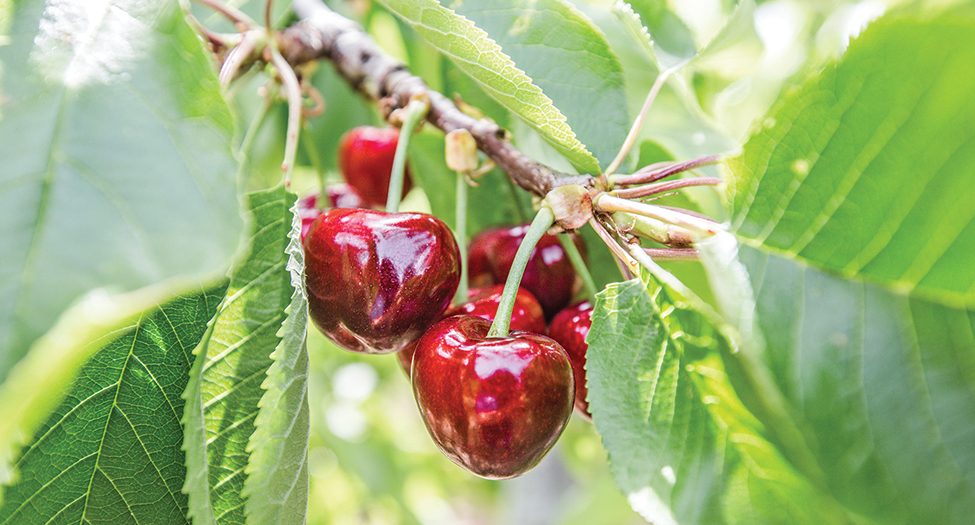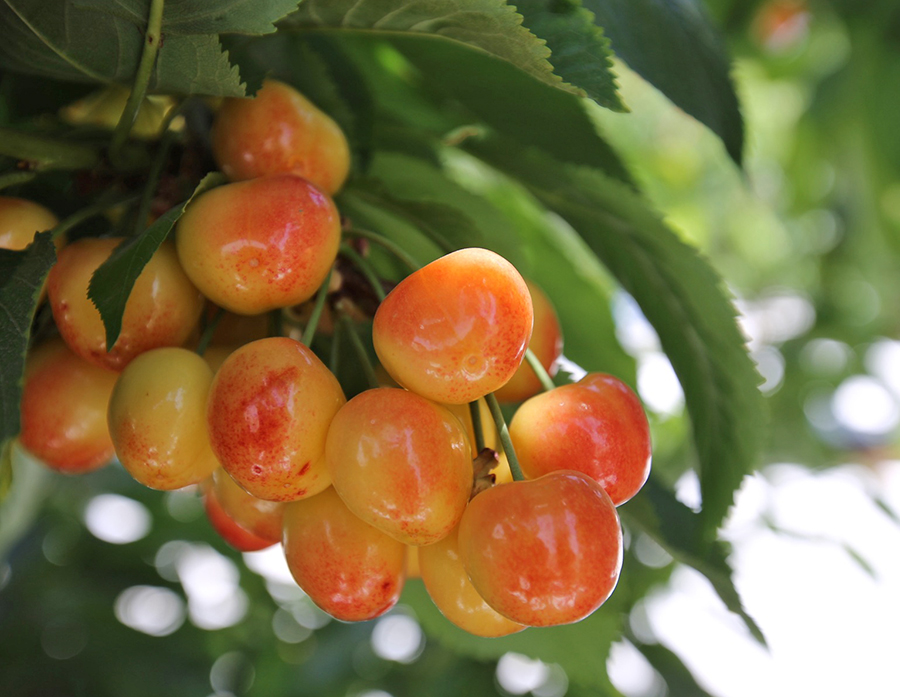
Home » Fruitful summer: Cherry crops a sweet success
Fruitful summer: Cherry crops a sweet success

June 12, 2019
The 2019 Washington cherry crop
is expected to reach nearly 25 million boxes.
These
initial estimates come from about 2,100 cherry growers who are part of the
Northwest Cherry Growers/Washington State Fruit Commission, a five-state group
covering orchards in Washington, Oregon, Idaho, Montana and Utah.
Before
cherries are picked, “there are still plenty of opportunities to have a wreck,”
said Bill Michener, who has a small cherry orchard on his farm in Grandview.
“It
should be a fantastic crop,” said James Michael, the Washington State Fruit
Commission’s vice president of marketing for North America.
One
of the gauges of a successful crop is the number of flower blooms. A recent
year that saw a record number of cherries included four to six flowers per bud,
compared to a two- to three-bloom average.
“This
year, we’re seeing more twos than fours,” Michael said. “The crop will be
spread widely throughout the trees and the fruit will be good dessert quality.”
Northwest
cherries boast large, firm fruit, with 80 percent coming in at one inch in
diameter or larger. This is superior to some of the nation’s other cherry
markets.
“It’s
important we maintain this size while maintaining a world-class product,”
Michael said. “It’s not just a processed product. It’s still a cherry. It’s a
taste of summer.”
Producing
more than 20 million boxes in a season has become the norm after Washington
first broke that threshold in 2009. A box holds 20 pounds of cherries.
American
cherries are affected by 40 percent retaliatory tariffs placed by China, a
country that had grown from receiving its first shipment of Northwest cherries
13 years ago, to becoming the crop’s largest export market as recently as 2017.
That was before sales suddenly dropped due to the trade war.
Industry
estimates say Chinese tariffs cost cherry growers $96 million across
Washington, Oregon and Idaho just last year. Michael said Northwest growers
export about 30 percent of their crop each year and despite the retaliatory
taxes, 30 percent still left the country.
“One
million boxes that would have gone to China were shipped elsewhere in the
world,” Michael said. This included other markets like South Korea, where
Washington cherries are increasing in demand.
It’s
critical cherries have an intended destination since, unlike other crops,
cherries are highly perishable and need to be kept cold throughout the process
of getting them from the tree to consumer. The stone fruit must be picked,
packed and shipped within 24 hours, holding the fruit at 32 degrees while it’s
prepped for boxing.
Labor
demands also can be a threat to growers when it’s time to get the fruit off the
trees.
Local
cherry farmer Patrick Sullivan said he lost more money last year from a labor
shortage than he did from the impact of Chinese tariffs.
“I
was short on labor last year and the years before that also. We spend all this
money developing this crop, getting it to harvest and then you don’t have
somebody to pick it,” he said.
Sullivan
is watching potential changes to the H-2A program, which provides visas to
foreign nationals to serve as temporary agricultural workers. Sullivan called
the program “pretty essential” and said Washington has had trouble in the past
establishing its own residential workforce. He is concerned about the prospect
of additional fees connected to the use of the visas.
“If
that’s the case, I’ll have to rely on local and some California labor for
harvest,” he said.
The
labor demand for cherries is huge for the crop that’s consistently part of the
top 10 agricultural commodities in Washington, valued most recently by the U.S.
Department of Agriculture at $479 million for 2017. This was a 4 percent drop
from the previous year’s bumper crop when cherries were the sixth highest crop
in the state, but still a significant increase from the $447 million value in
2015.
The
USDA’s 2018 crop overview for the state showed a sweet cherry production of
215,000 tons, which generally are eaten fresh, and include varieties like Bing,
Rainier and Chelan.
The
state also produced about 23.8 million pounds of tart cherries, which often are
used for juice. The Northwest cherry season begins in early June and runs
through the end of August.

Rainier cherries are among the sweet cherry varieties grown in Washington that usually are eaten fresh. (Courtesy Northwest Cherry Growers)
This
year’s season the trees were later to bloom due to the extended amount of time
snow was on the ground in early 2019, but Michael said the crop gained about 10
days on growth due to the steady spring warmth. Thanks to microclimates within
the Northwest, cherries are able to ripen at different times, which can
lengthen the overall season.
Michael
said growers need to be risk-tolerant if they’re going to grow cherries — known
as a gambler’s crop.
“Mother
Nature can give or take away a quarter of our crop in one weekend,” he said.
He
said weather remains the greatest threat to cherry farmers when compared to
other external factors, like labor issues or trade wars. “There are a lot of
other crops that will let you sleep better at night,” Michael said.
Though
cherry growers might suggest the key to a more restful sleep is consuming some
of their fruit about an hour before bedtime. Sleep cycle benefits from cherries
were cited as part of a larger study commissioned by local growers to tout the
health benefits of the fruit.
The industry group was behind a paid review of 30
previous studies which summed up various nutritional claims for sweet cherries,
including anti-inflammatory benefits, reduction of gout attacks and lowering
blood pressure. The study pointed to the fruit’s high concentrations of nutrients
like fiber, vitamin C and potassium.
More
than 42,000 acres of land are dedicated to growing cherries in Washington.
Michael
said a lot of families in the business, like the Sullivans, have been growing
cherries for years. There still are new growers in the industry, some intrigued
by the volatile crop and others interested in the disruptions new technology
can bring to the field.
Sullivan’s
family has been growing cherries since the 1960s. The three generations of
farmers have 160 acres north of Pasco “We’re not getting rich, but we’re
supporting our livelihood,” he said.
Still,
Michael said growers have to prepare for a total crop loss once every four
years. “You’re lucky if you break even because whatever it is doesn’t come
close to what you owe the bank,” he said.
When
asked if he ever considers getting out of the business, Sullivan laughed. “I
think about it daily,” he said.
He
said the last five years have been especially difficult due to rising costs for
everything from fuel, labor and chemicals.
“Our
returns stay pretty much the same,” he said.
Sullivan
said big retail stores have more ability than they once did to push around the
little guys when it comes to pricing, but he stays with the industry, believing
in the strength of the product.
“The Northwest raises the
highest quality cherries in the nation, if not the world,” he said.
Agriculture + Viticulture
KEYWORDS focus agriculture viticulture 2019





